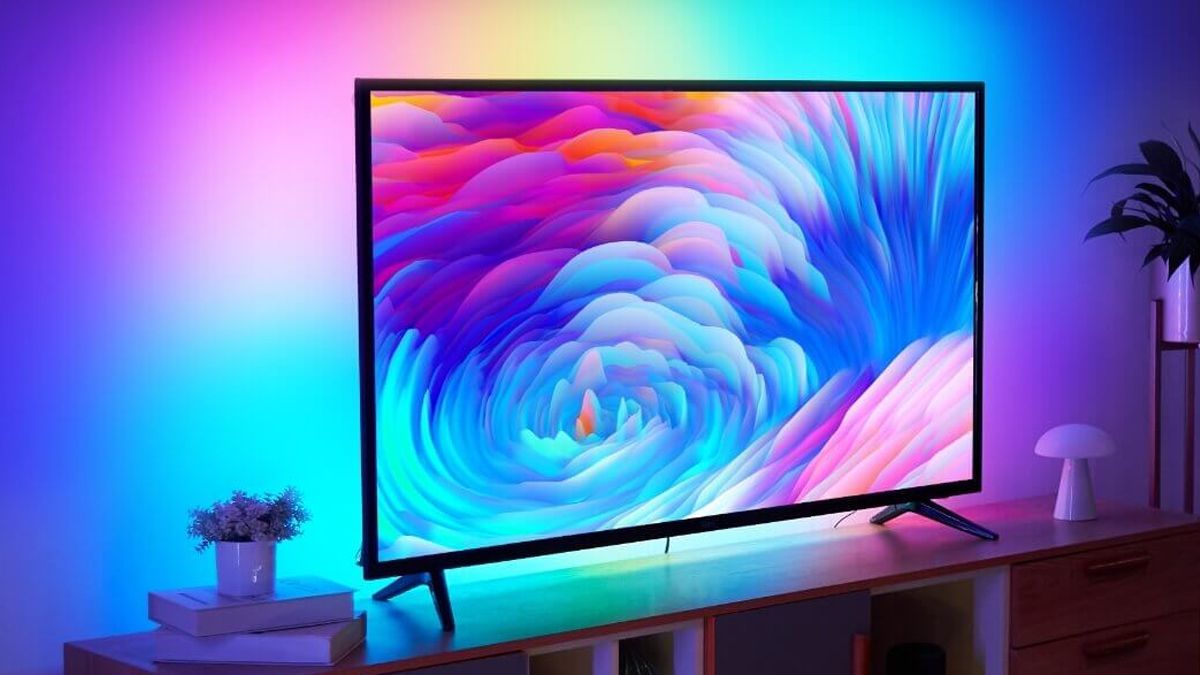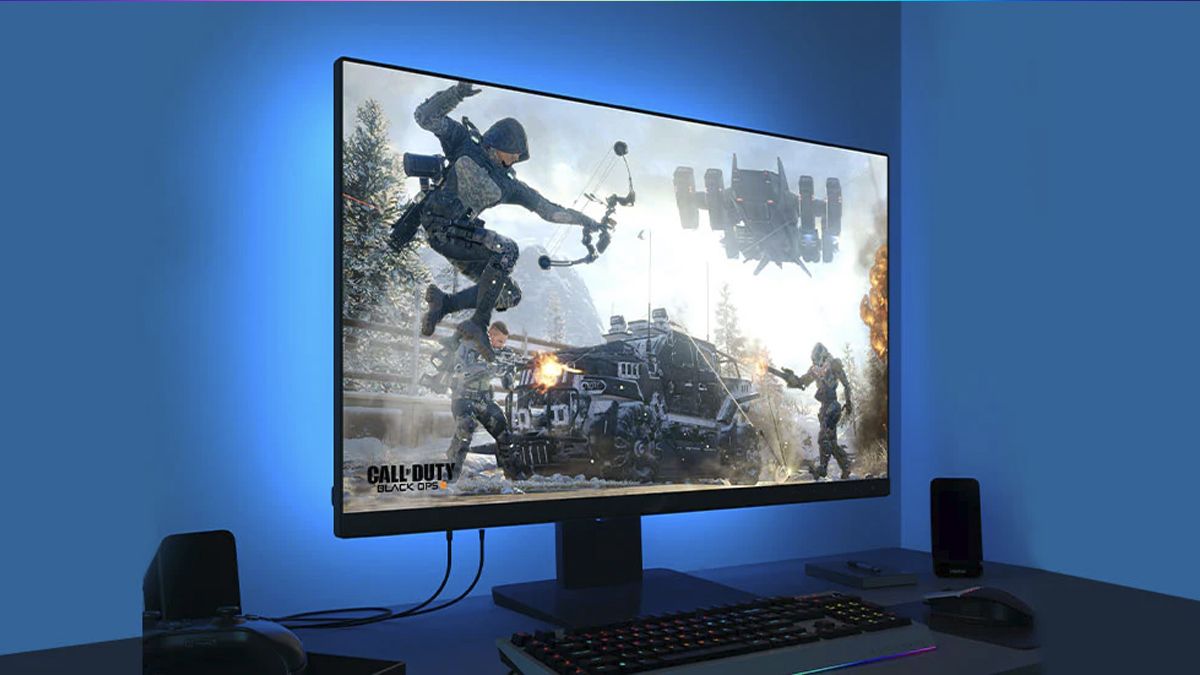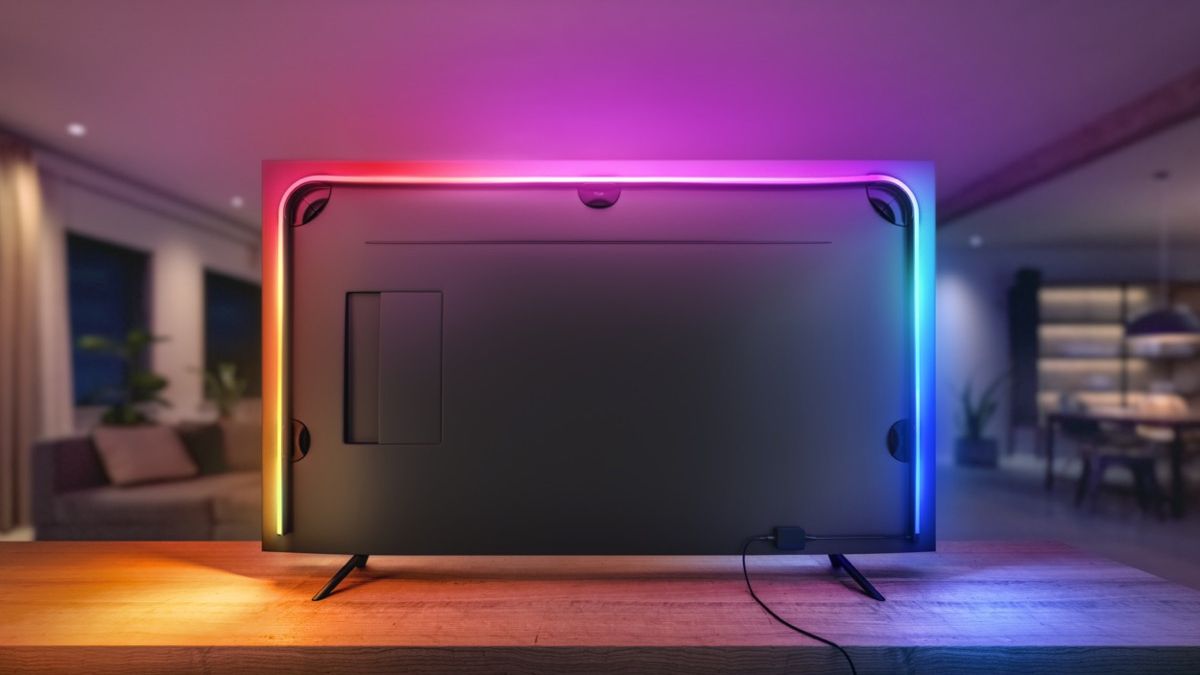Quick Links
Bias lighting is a great way to not only make using a computer or watching TV more comfortable but to add a little ambiance and style to your home office or living room. Here are some examples of traditional, smart, and adaptive bias lights for your home worth looking at.
What's Bias Lighting?
Never heard of bias lighting? There's no time like the present to learn about the eye-fatigue-preventing lighting style. For a deep dive into the topic, including tips on lighting placement and color temperature, do check out our guide to bias lighting.
In short, though, bias lias lighting at its most basic is simply a relatively dim light source placed behind a computer monitor, TV screen, or even around a projection screen in a home theater, that introduces a small amount of indirect light into the environment without directly shining it into the viewer's eyes.
That small amount of light helps your eyes work better and with less strain, both increasing your comfort as well as creating better contrast on the screen. And, when you get into the fancier bias lights, you'll even find neat features like adaptive lighting that syncs up with the content on the screen for a real wow factor.
Traditional Bias Lighting: Simple White for Simple Comfort
The most basic form of bias lighting is simply a white light of some kind, preferably 6500K in lighting temperature, placed behind the display. If your TV sits at an angle in the corner that light could be as simple as a 6500k LED bulb shining at the wall, but more traditional along-the-wall placement requires something slimmer like an LED strip.
Thanks to the ever plummeting cost of LEDs though it's cheaper than ever to add some LED bias lighting to your computer monitor or TV. We'd caution you against going too cheap, however, because you still want to ensure that the LEDs have good quality control and accurate color temperature.
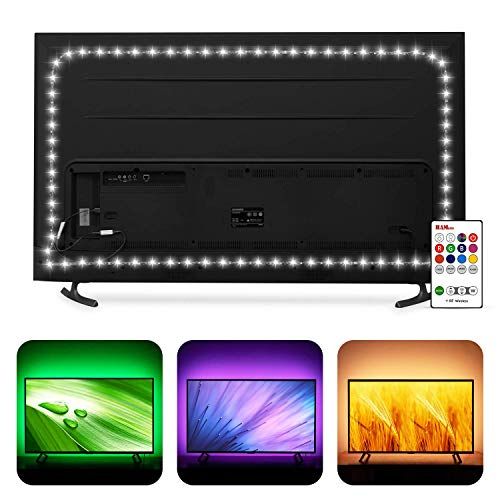
Hamlite 6500K USB-Powered Bias Light Strip
Simple, USB powered, and you can easily cut it to size.
A lot of people opt for a simple LED strip like this Hamlite model. It has a 6500k color temperature, dedicated white LEDs, and it's USB powered.
The more advanced options we're about to look at require always-on power, so if you don't want to fuss with switches or remotes and just want the lights to turn on when the TV turns on, using the USB port on the back of the TV (or on your computer) is a clever way to link the power state of the lights to the power state of the display.
To get all the functional benefits of bias lighting without any fuss or frills, you really can't go wrong with a bare-bones white LED strip or a white LED bulb. There are, however, some benefits to moving up to smart home-integrated bias lighting and even adaptive bias lighting.
Smart Bias Lighting: Hey Google, It's Gaming Time
While there's nothing wrong with sticking with the most basic option, mixing in lights with smart home integration offers some perks.
If you have the room set up for any sort of integrations related to watching movies, gaming, or similar activities, you can simply add the smart bias lighting into the mix to turn on when it's movie time or such.
In my house, for instance, you can say "Hey Google, it's movie time" or "gaming time" in any of the rooms with smart bias lighting configured and the Google Home system will automatically adapt all the smart gear in that room for the task.
You can also use the smart bias lighting in ways that aren't directly related to consuming media or playing games. Those same smart lights I have with all the TVs and computer monitors can also be used for secondary lighting purposes. At night the LEDs can function as a perfect form of ambient lighting in the room, whether you're watching TV or not, or simply be integrated into the general lighting of the room.
You can go basic and look for an option that includes simple smart home integration or you can spend more money on an LED strip with more sophisticated features like pattern displays, music syncing, and such. Although increasingly even the budget options include these features so there's usually no reason to avoid them.
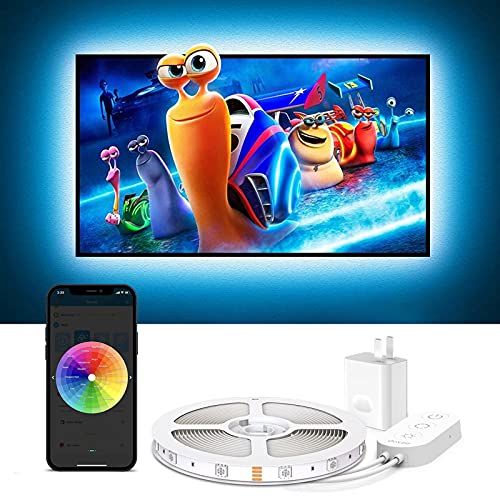
Govee TV Backlight
Despite the reasonable price, this little light strip includes smart home integration and other features.
For example, you can pick up a basic Govee TV backlight for $20-30 and enjoy integration with your smart home (as well as app-based control, of course). The Govee app lets you set up light displays and if you want your space to have a rave mode a tiny onboard mic will sync the lights to music.
There are pricier options, too, of course, like a more advanced RGBIC strip from Govee that includes brighter LEDs with smoother color transitions. If you're looking for affordable and smart-home integrated lights of all shapes and sizes, by the way, you really can't go wrong with Govee. Despite my heavy investment in the Hue ecosystem, I still use Govee lights all over the place including in my yard.
Speaking of the Philips, you'll find options in the Hue line of smart lighting too but their smart LED strips are pretty expensive for what they are---just basic, albeit high-quality, LED strips that integrate with the Hue ecosystem. If you're going to pay Hue prices, you really should make the jump to the last kind of bias lighting---adaptive bias lighting.
Adaptive Bias Lighting: The Flashiest Option Around
So far we've talked about basic lighting and lighting that has some form of integration with your smart home system for ease of use and extra features.
If you want to spend a bit more money and have a much flashier experience with your bias lighting experience, you can make the leap from simple bias lighting (smart or otherwise) to lighting that changes in response to what is on the screen.
Call it adaptive, dynamic, or responsive bias lighting, the outcome is the same and quite impressive. Adaptive bias lighting syncs up, through various mechanisms, to the content on your display which creates a room-filling color that really does make it feel like the screen is bigger and the action unfolding on it more immersive.
The company that put this style of viewing on the map is Philips, with the introduction of its "Ambilight" system. Ambilight TVs feature an integrated LED strip around the back that remains synced, through the TV hardware itself, with the content of the screen. Once relatively popular, there are very few of the Ambilight TVs on the market now and the majority of people enjoying adaptive bias lighting are doing so with third-party solutions added to their existing TVs.
Philips does, however, offer a pricey Hue Sync Box that can be paired with Hue LED strips, Hue Play Bars, or compatible Hue bulbs in general, to turn any TV into an Ambilight TV. The benefit of the Hue box is that it's a line-level integration with your TV, meaning that the LED strip around the set is getting color data directly from the HDMI signal fed into it.
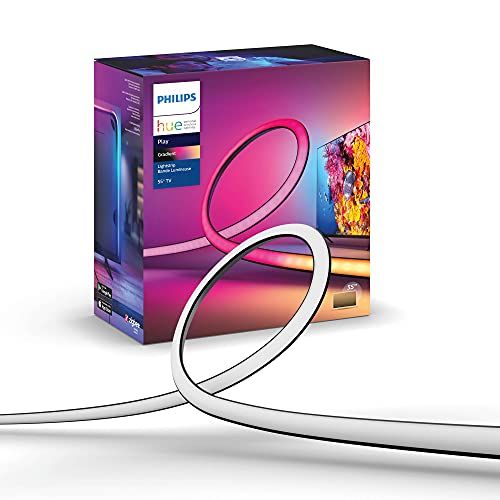
Philips Hue Gradient LightsStrip
The LightStrip is a premium solution for TV bias lighting, but paired with the Hue Sync Box it's an impressive one.
The vast majority of people using this setup are quite happy with it as a result---and if they have any complaints it's about the steep price, not the end result. The only downside to the Hue Sync Box, besides the price, is that it requires a video input. If you use the apps on your smart TV for all your streaming services, you'll need to use a streaming device instead to feed the signal into the box.
If you're interested in the experience without the steep price tag, by the way, you can do it a lot cheaper if you already have Hue products and you're adding adaptive bias lighting to your computer (or you have an HTPC hooked up to your TV).
Philips has a lightweight application, available for both Windows and macOS, called "Hue Sync for PC" that effectively turns your computer into the source of the video stream data (no Hue Sync box needed). If you're already a Hue household and you have some compatible Hue products like the Hue Play Bars you just need the free app and you're in business. I use this setup on my gaming computer and it's a great way to crank up the in-game immersion.
While Philips might have been first to the market and still has a very impressive product lineup, there is a much more economical alternative---the Govee DreamView. It's not line-level input and the color matching isn't as precise, but I own it (and love it) and we reviewed it over at Review Geek and they loved it there too.
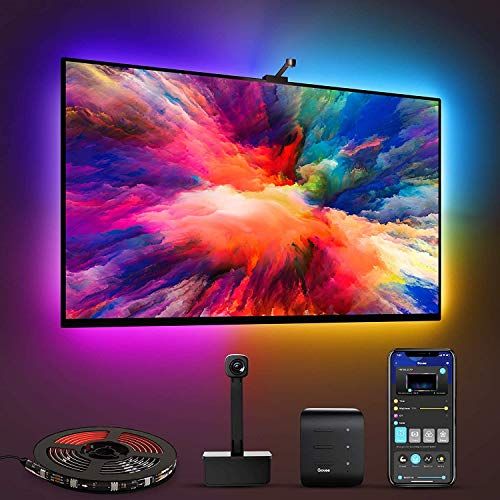
Govee DreamView
Govee Immersion LED strips add dynamic bias lighting to your TV based on whatever's happening on-screen. It's an incredibly affordable alternative to Philips Hue Play setups.
Instead of a box that intercepts the video signal (or an app on your computer), it uses a camera to monitor the screen in real-time. While the Philips platform might win out in a 1:1 color match contest, Govee's DreamView system is roughly one-sixth the cost and the overall effect is still very pleasant.
Like the Hue Play system, you can add more lights to increase the ambiance in the room---but again, at a fraction of the cost.
But however you add bias lighting to your setup, be it a simple white LED strip or a more sophisticated adaptive system that wows your friends and family, your eyes will thank you. Once you start using bias lighting for work and play, you won't be able to imagine life without it.

